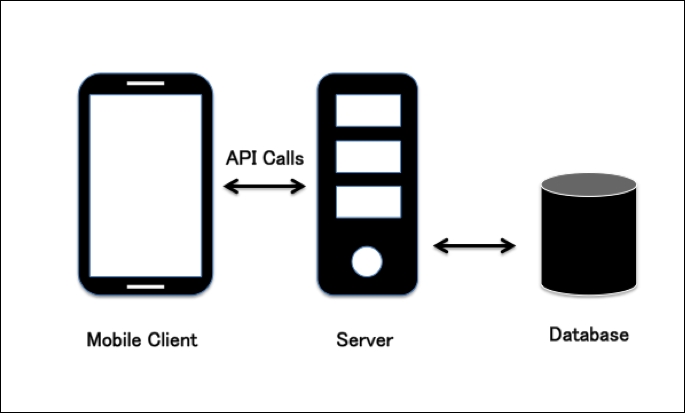When an application is developed, we need to consider enforcing security controls at each layer of the application's architecture.
Mobile apps such as social networking, banking, and entertainment apps contain a lot of functionality that requires Internet communication, and so most of the mobile apps today have typical client-server architecture as shown in the diagram below. When understanding the attack surface for these kinds of apps, it is required to consider all the possibilities of the application, which includes the client application, API backend, server related vulnerabilities, and the database. An entry point at any of these places may cause a threat to the whole application/its data. For illustration, assume that we have an Android app connecting to its server using the backend API, which in turn interacts with its database:

It is recommended to follow the Secure SDLC process while developing software. Many organizations embrace this method of SDLC to implement security at each phase of the software development life cycle process.
Secure Software Development Life Cycle (SDLC) is a methodology to help organizations build security into their products right from the beginning of the SDLC process and not as an afterthought. Embracing SDLC increases the profits by reducing the efforts involved in fixing issues during maintenance cycles.
As we can see in the following diagram taken from the Microsoft SDL process document, each stage of SDLC involves at least one security activity which will help in securing the application. Every organization is different in embedding security in SDLC and their maturity differs, however, the following could be a good start for organizations who are thinking of embracing this methodology:
- Threat Modeling: Identify the threats to your applications by defining the assets, value it provides, and perspective threat actors who might be interested to attack the assets. Threat modeling ideally needs to be done during the Design phase of the application.
- Static Analysis: During the Implementation phase, it's recommended to do static analysis on the source code at least once per release cycle. This gives stakeholders an overview of the risks and they can either accept the risks or they can ask dev teams to fix issues before the application goes to production.
- Dynamic Analysis: Dynamic analysis is done during the Verification phase of the SDLC process. Dynamic analysis is a technique to find issues while the application is running. It can help organizations in knowing the security posture of their applications before deployment. We will cover more of what Dynamic analysis entails and how it can be done in the next few chapters.

Let's explore some common threats to mobile apps that have to be addressed during the design phase of a mobile app. The assumption is that the attacker can get physical access to the device as well as the app binary.
